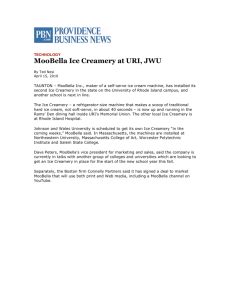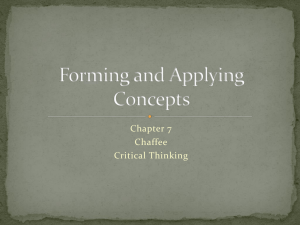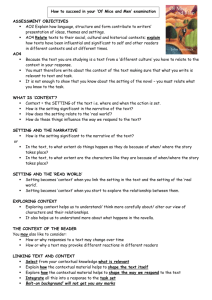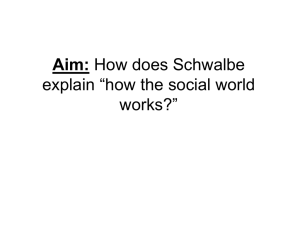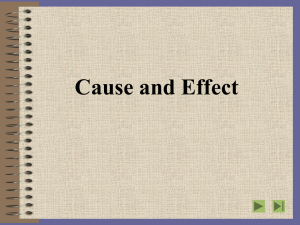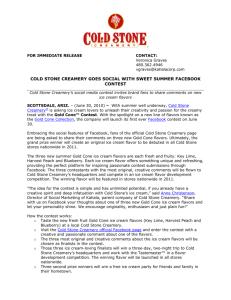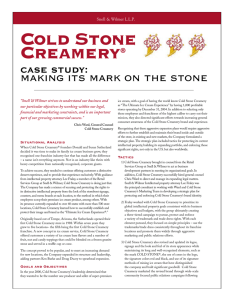B300 Individual Reflection: I`m going to be completely honest in that
advertisement
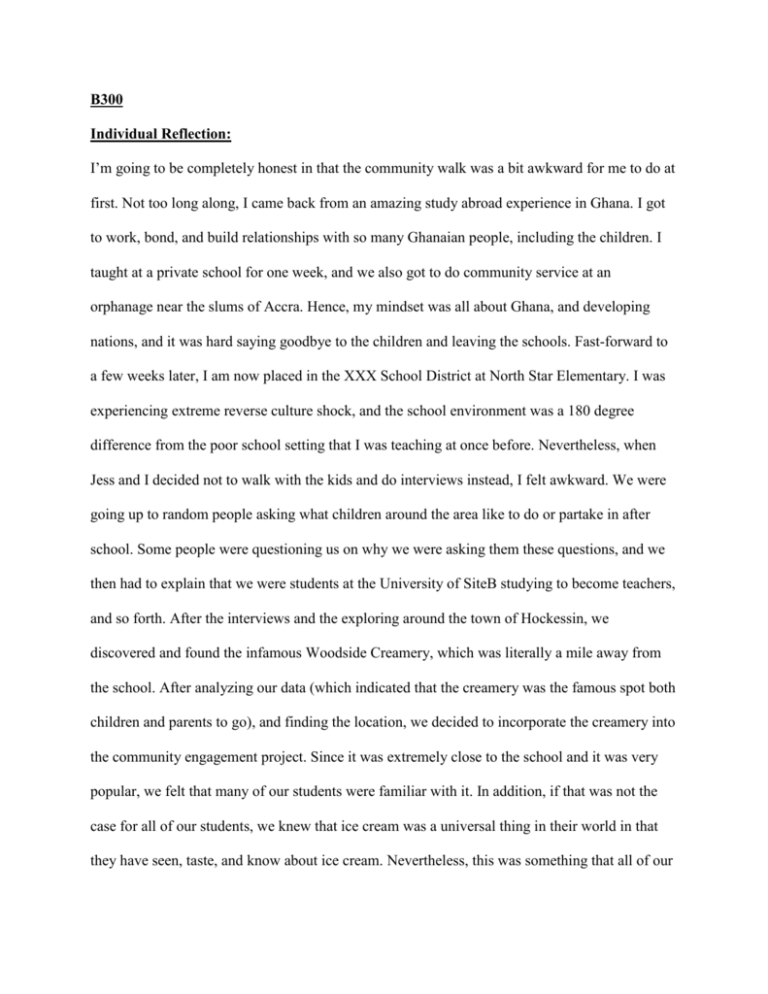
B300 Individual Reflection: I’m going to be completely honest in that the community walk was a bit awkward for me to do at first. Not too long along, I came back from an amazing study abroad experience in Ghana. I got to work, bond, and build relationships with so many Ghanaian people, including the children. I taught at a private school for one week, and we also got to do community service at an orphanage near the slums of Accra. Hence, my mindset was all about Ghana, and developing nations, and it was hard saying goodbye to the children and leaving the schools. Fast-forward to a few weeks later, I am now placed in the XXX School District at North Star Elementary. I was experiencing extreme reverse culture shock, and the school environment was a 180 degree difference from the poor school setting that I was teaching at once before. Nevertheless, when Jess and I decided not to walk with the kids and do interviews instead, I felt awkward. We were going up to random people asking what children around the area like to do or partake in after school. Some people were questioning us on why we were asking them these questions, and we then had to explain that we were students at the University of SiteB studying to become teachers, and so forth. After the interviews and the exploring around the town of Hockessin, we discovered and found the infamous Woodside Creamery, which was literally a mile away from the school. After analyzing our data (which indicated that the creamery was the famous spot both children and parents to go), and finding the location, we decided to incorporate the creamery into the community engagement project. Since it was extremely close to the school and it was very popular, we felt that many of our students were familiar with it. In addition, if that was not the case for all of our students, we knew that ice cream was a universal thing in their world in that they have seen, taste, and know about ice cream. Nevertheless, this was something that all of our students could relate to, even if they have not been to the specific creamery. When interviewing not only James, but several students in the class (including our co-op), soccer was the most popular sport that the children played in, both boys and girls. Nonetheless, with all of the information that we received and compiled, we designed our task to state the following: “Your soccer team that has 11 players goes to the creamery after winning the final game. Each player gets 3 scoops of ice cream. Some of the flavors they get are chocolate, cotton candy, and cookies n cream. How many scoops of ice cream did the team get in all?” It was interesting relating this to mathematical terms, because honestly, before doing this project, I was more narrow-minded in terms of how to teach and incorporate math to students. I had more fear of teaching math as a whole, hence I was caught up in my own worries, not focusing on different teaching strategies. Now, WHEREVER I go, I see and think completely different in terms of teaching, and teaching successfully. Everywhere I go, I always think now if I can relate that situation into a math or science, social studies, or even reading. It was just so amazing to me that bringing the community and the students’ lives into your teaching can make such a dramatic change on how the child approaches and learns the lesson. When doing the case study project, just changing the name in the word problem to James’ best friend changed his output on how he solved the problem because he was more engaged and excited that his best friend’s name was in the world problem; hence, he wanted to solve it as quickly and correctly as possible with full excitement and positive attitude. 1. There are so many benefits in terms of teaching this style of math to students. As mentioned in many other assignments for this semester, most students in our country have a negative persona of math. When you have a negative approach or stance on something, the outcome is usually negative, hence many children find math to be challenging, difficult, boring, and non-relevant to their lives. When you can relate to something, your understanding of it becomes much better, and that is what this style of math does. When you incorporate your students’ communities, backgrounds, interests, cultures, and more, they become more interested in math because it is relatable. In addition, if they can relate to what they are learning in math, students can then realize how important math is in the real world, and their perception of math being just a school subject will slowly but surely change. Also, when this occurs, we teachers may have a better time teaching math because we receive more and positive output from our students. 2. The main challenge here is being able to relate math to every single student that is in your classroom. If you are teaching a lesson based on a cultural background, that may be challenging in that not every student may be able to relate to that culture or example that you used in your math lesson. Nevertheless, the challenge is being able to relate your community based lesson with every student. For those students that are not able to relate to the problem, they may feel left out, get upset, and not engage in the math lesson, which is not the purpose of the community engagement task. Another challenge that may arise from this is being able to reach out and make those connections with your students. We as future teachers have to make the extra effort in branching out to our students that are completely different from us in terms of backgrounds, cultures, and communities. If I have a Spanish-speaking child in my class, how will I make that connection if I cannot even speak Spanish? Hence, there are some challenges, but as future teachers, we will overcome them, and when we do, the rewards will certainly out way the challenges.

